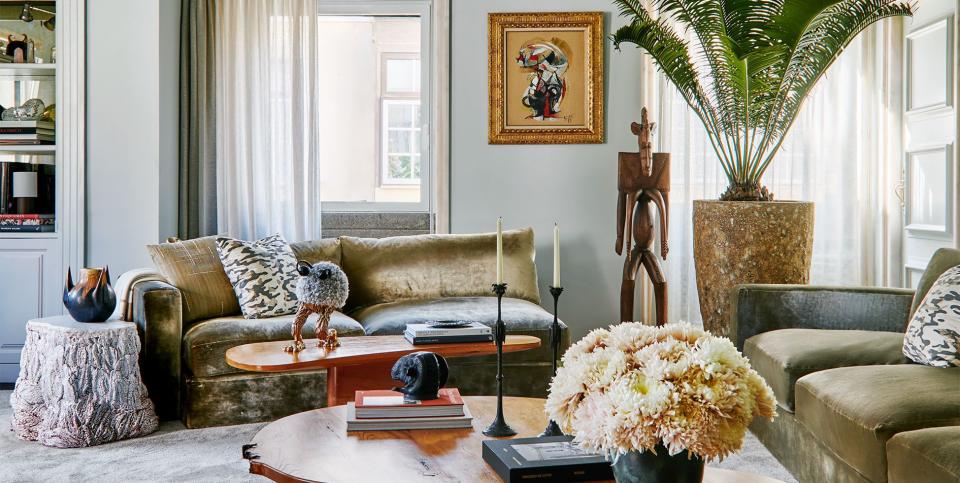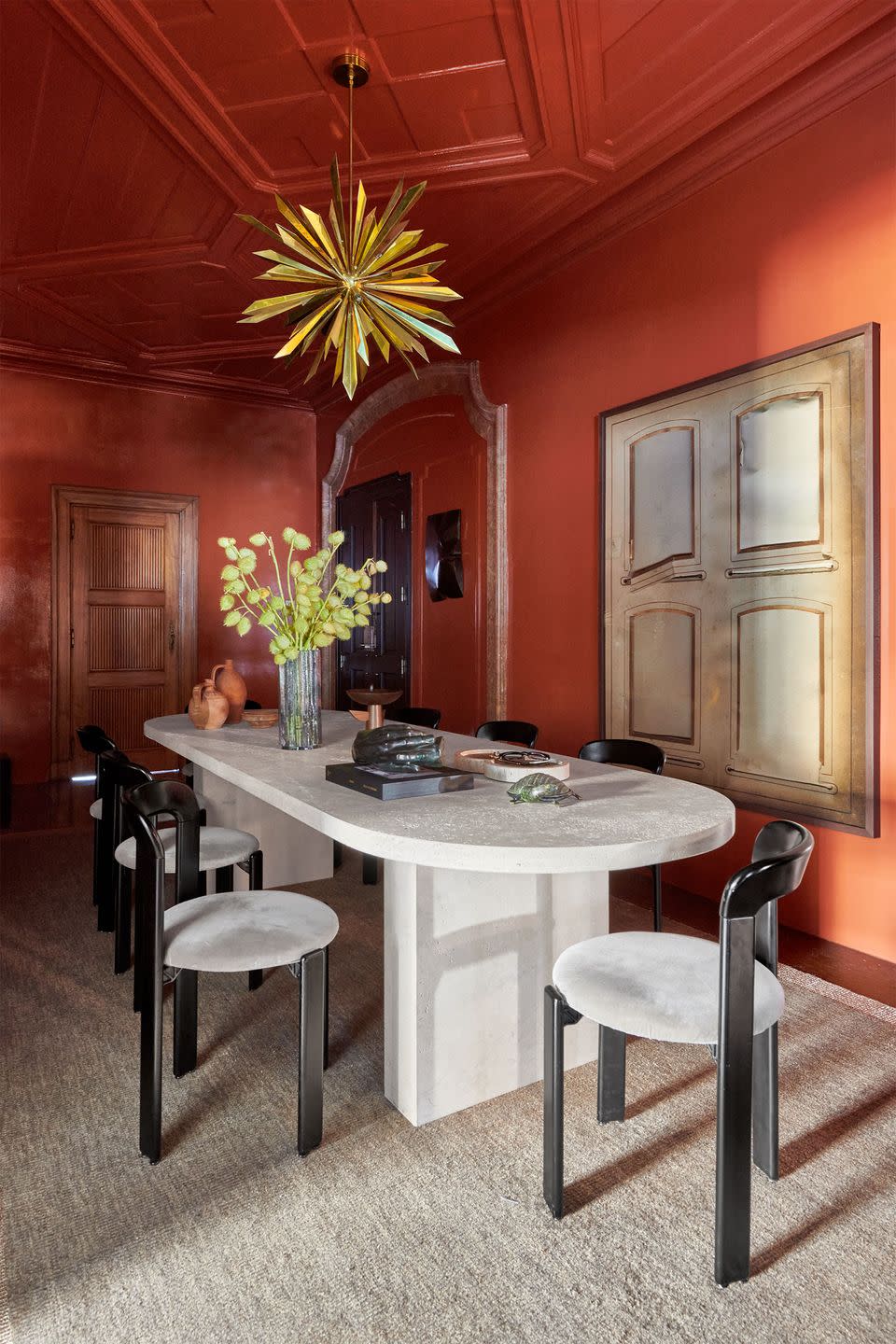This Dramatic Lisbon Home Is a Veritable Jewel Box of Treasures and Hues

When, in 2019, pandemic was still mostly a word in science fiction novels, Elad Yifrach picked up and moved to Portugal.
He had lost patience with New York’s intensity, he says, speaking from his home in a former mansion on a hilltop in downtown Lisbon. Having grown up in the Mediterranean sunshine of Israel and later the mellow embrace of Los Angeles, he was attracted to the country, whose easy climate and lifestyle have led it to be called the California of Europe.

Yifrach is the founder and creative director of the luxury design company L’Objet. It is his habit to roam the world, collaborating with the artisans who make L’Objet’s refined tableware and expressive furnishings. After growing fond of Portugal over many visits, he decided to move there, especially since he’d found the home of his dreams.
“You know that kind of place,” he says. “It’s the one you pass every day, always wondering who lives there.” Located on the Avenida da Liberdade, the Champs-Élysées of Lisbon, the building that sparked his imagination dates from the early 19th century and has a massive arched entry of volcanic stone inset with an iron-studded wood door that could admit a team of oxen. An aristocratic family had occupied the mansion for 140 years before it was divided in the 1990s into two apartments, plus ground-level commercial space.
When Yifrach learned that the Swiss tenants in the upstairs unit were vacating, he swooped in. The apartment, comprising about 2,700 square feet, had authentic grandeur but was far from perfect. He set about introducing the things he loves and is known for: exquisite materials, details that can be wrought only by hand, and tributes to Art Deco and its close relation, 1970s style.
The first uh-oh moment in renovating his new home was what to do with the entrance gallery, a white space that wasn’t “wide enough to be a room or narrow enough to be a hallway.” He made it a jewel box, with walls painted in a high-gloss terra-cotta and a white travertine dining table that sweeps down the space like a contrail. Voilà, he had a room after all, where guests can gather around the table, set with dishware by L’Objet designers like the Haas brothers, along with his collection of 1930s Puiforcat silver.

In the jumbo-size living room, the tone shifts from fire to ice, with pale blue walls and soft, lavish seating. Yifrach designed the nearly 15-foot silk-velvet modular sectional, which can be split to create conversational areas. The larger of two cocktail tables in the space is eight feet long and made of Portuguese cedar, with a curved top to diminish its bulk. “I didn’t want one rectangular piece that looked like a tomb,” he explains.

 Yahoo Autos
Yahoo Autos 